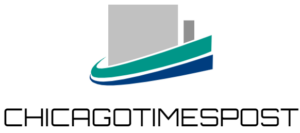Milling machines are pieces of equipment that are deployed to remove unwanted bits from metals. These machines come in various shapes and sizes, and these varieties are usually dependent on the capacity of the device. With the advent of technological innovations, milling machines became evolved from manual control to automatic control. One of such automatic control brought about the computer numeric control (CNC) in milling machines. CNC milling service refers to the process of machining that incorporates computerized controls in its operations. To get the best out of CNC milling, certain programming functions are put in place before the operation begins. This article takes a look at the processes involved in CNC programming:
- Design of a CAD model: First and foremost, a 2D or 3D design of the model is designed. This design requires the utmost attention to detail as it will most likely determine how the final work will look like. 3D designs are often preferred to 2D designs due to the possibility of creating futuristic patterns. As soon as these designs are created, they are exported and converted to a CNC-compatible form. This form is then opened with a CAM software that’s connected to the CNC programming machine.
- Reading of CAD design: When the CAM software is connected to the CNC milling machine, the machine starts to function based on the program fed into it. At this point, the object to be milled is positioned in the machine. The machine parts start to move horizontally or vertically, depending on the mode of operation of the machine.
- Cutting process: Once the object is fed into the work holder of the machine, the cutting tool starts to move at extremely high speed. As opposed to the manual milling system, the machine does not require a handler.
There are different ways a CNC programming machine can cut tools, and these methods are listed below:
- Plain milling: Plain milling refers to the situation where the rotational axis of the cutting tool is parallel to the surface of the object being milled. Plain milling is more effective for objects that do not have huge depth and width.
- Face milling: Face milling refers to the situation whereby the rotational axis of the cutting tool is perpendicular to the surface of the object that is being milled. This method of milling is suitable for creating contours, and flat finishes on objects.
- Angular milling: In this operation, the cutting tool is placed at an angle against the surface of the object being milled. The cutter can be placed at a variety of angles to get the desired shape.
- Form milling: Form milling has to do with milling on objects possessing irregular shapes and contors. This operation involves a delicate and intricate approach to milling as certain delicate corners require this approach.
The milling industry has evolved over the years, and the days of having to operate a milling machine manually are coming to an end. CNC programming machines do not require a manual handler to move the machine over objects, and this is quite a massive boost in terms of efficiency. This article takes a look at how the machine works and various ways in which one can deploy it.







